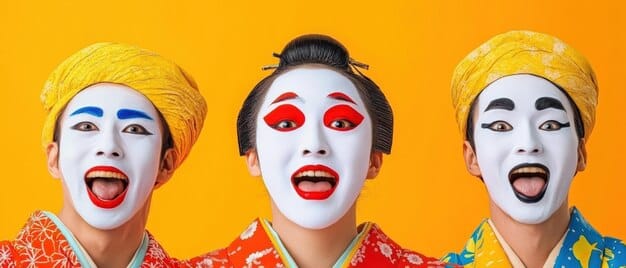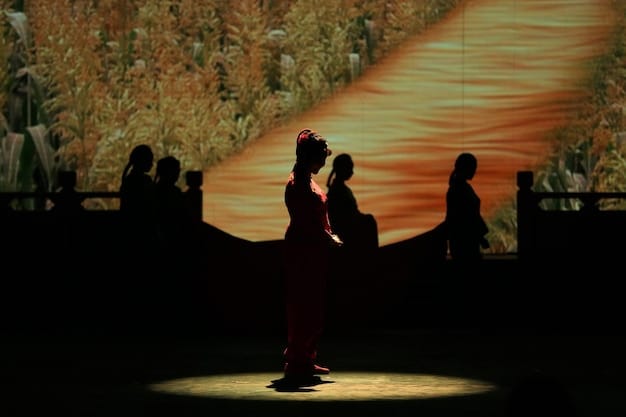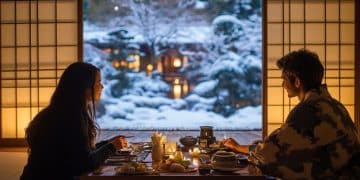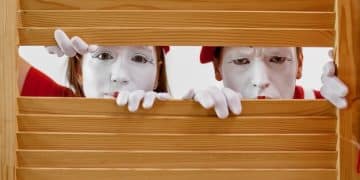Korean Drama Slang: Your Ultimate Guide to K-Drama Phrases (2025)

Korean drama slang offers a unique window into Korean culture, enhancing viewers’ understanding and enjoyment of K-dramas through common phrases and expressions used in the shows.
Ever found yourself lost in translation while watching your favorite K-drama? The vibrant world of Korean dramas comes with its own unique set of slang and expressions. Let’s unravel the most common Korean drama slang, ensuring you’re always in the loop!
Unveiling the World of K-Drama Slang
Korean dramas, or K-dramas, have taken the world by storm. However, understanding the nuances of these shows goes beyond just reading the subtitles. A grasp of K-drama slang can significantly enhance your viewing experience.
Let’s take a look at why learning K-drama slang is more than just a fun hobby.
The Importance of Understanding Slang in K-Dramas
Understanding slang provides a deeper connection to the characters and their world. It helps viewers grasp the underlying emotions, humor, and cultural references that might be missed in translation.
- Enhanced Comprehension: Slang often carries cultural nuances that subtitles can’t fully convey.
- Deeper Connection: Recognizing slang allows you to understand the characters on a more personal level.
- Improved Enjoyment: Catching slang adds a layer of fun and excitement to watching K-dramas.
By familiarizing yourself with common slang terms, you’re not just watching a show; you’re immersing yourself in a culture.

Essential K-Drama Slang Terms for 2025
As K-dramas evolve, so does the slang used within them. Here are some essential K-drama slang terms you’ll likely encounter in 2025.
Let’s break these down and understand how and when to use them correctly.
“Oppa” (오빠) – More Than Just “Older Brother”
“Oppa” literally translates to “older brother” (for females), but it’s used far beyond familial relations. It’s a term of endearment, often used to express affection or respect towards an older male friend, boyfriend, or even a celebrity.
“Aegyo” (애교) – The Art of Cuteness
“Aegyo” refers to acting cute in a flirtatious or endearing way. It’s often characterized by childlike behavior, such as pouting, using a baby voice, or making cute gestures. While it can be charming, excessive aegyo can sometimes come across as childish.
“Daebak” (대박) – That’s Awesome!
“Daebak” is an exclamation used to express excitement, amazement, or approval. It’s similar to saying “awesome,” “jackpot,” or “amazing!” in English. You can use it when something unexpectedly good happens or when you’re impressed by something.
Understanding these terms will give you an immediate advantage in understanding K-drama conversations.
Slang Related to Relationships and Love
Relationships are a central theme in many K-dramas, so it’s no surprise that there’s a whole category of slang related to love and dating.
Let’s explore a few popular terms that describe romantic connections.
“Ssam” (썸) – Something More Than Friends
“Ssam” refers to the ambiguous stage between friendship and a romantic relationship. It describes the “talking stage” where two people are interested in each other but haven’t officially started dating. If two characters in a K-drama are “ssam-ing,” viewers know that a potential romance is brewing.
“Skinship” (스킨십) – Physical Affection
“Skinship” is a Konglish term (a combination of Korean and English) that refers to physical contact between people, particularly in a romantic context. It can range from holding hands to hugging and kissing. Skinship is often portrayed as a significant step in a relationship in K-dramas.
“Chadol Nam” (차도남) – The Cold City Guy
“Chadol Nam” is an abbreviation of “chagaun dosi namja,” which translates to “cold city man.” It describes a male character who is initially cold, aloof, and distant but eventually warms up to the female lead. This trope is common in K-dramas.
These phrases add emotional depth and realism to the relationships portrayed on screen.

Slang for Describing People
K-dramas are full of colorful characters, and there’s a wide range of slang terms used to describe them. From personality traits to physical appearances, these terms add depth and humor to the storytelling.
Let’s look at how the Korean language uses slang to paint a vivid word-picture of a person.
- “Momjjang” (몸짱): This term refers to someone with a great body or physique. It’s often used to compliment someone who is very fit and muscular.
- “Ulzzang” (얼짱): “Ulzzang” means “best face” or “good-looking.” It’s a popular term used to describe someone with attractive features, often with perfectly styled hair, flawless skin, and big eyes.
- “Heol” (헐): “Heol” is an exclamation similar to “what the heck” or “OMG.” It’s used to express disbelief, shock, or surprise. It’s the perfect phrase to use when you can’t believe what’s happening on screen.
Understanding these descriptive slang terms allows viewers to grasp the cultural standards and expectations reflected in K-dramas.
Common Phrases and Exclamations
Beyond individual slang words, there are also common phrases and exclamations that appear frequently in K-dramas. These phrases provide insight into Korean culture and social dynamics.
Let’s dive into some of these common verbal expressions.
“Aish” (아이씨) – A Versatile Expression of Annoyance
“Aish” is a versatile expression that can convey a range of negative emotions, from mild annoyance to frustration. It’s similar to saying “ugh,” “shoot,” or “darn” in English.
“Jinjja?” (진짜?) – Really?
“Jinjja?” means “really?” or “seriously?” It’s used to express surprise or disbelief. Depending on the intonation, it can also convey doubt or skepticism.
“Fighting!” (화이팅!) – You Can Do It!
“Fighting!” is a term of encouragement, similar to saying “you can do it!” or “good luck!” It’s often used to cheer someone on or to express support. Although it sounds like the English word “fighting,” it’s used in a purely positive context.
Learning these phrases makes understanding the emotional cadence of the drama much simpler.
How to Learn and Use K-Drama Slang Effectively
Learning K-drama slang can be a fun and rewarding experience. But it’s important to approach it strategically to avoid misunderstandings and cultural missteps.
Here are a few ideas on how to incorporate these slang terms appropriately.
- Watch K-Dramas Actively: Pay close attention to the context in which slang terms are used. Note the characters, their relationships, and the overall tone of the scene.
- Use Online Resources: There are many online dictionaries, forums, and social media groups dedicated to K-drama slang. These resources can provide explanations, examples, and opportunities to ask questions.
- Practice with Native Speakers: If you have Korean-speaking friends or access to language exchange partners, practice using slang terms in conversation. This will help you understand the nuances of usage and avoid making mistakes.
With dedication, you can learn a great deal of slang terms to enjoy your favorite K-dramas.
| Key Concept | Brief Description |
|---|---|
| 🎭 Oppa | Term used by women to address older male friends/siblings; shows affection. |
| 💖 Aegyo | Acting cute in a flirtatious or endearing way. |
| 🎉 Daebak | Exclamation used to express excitement, amazement, or approval. |
| 🤝 Ssam | The “talking stage” where two people are interested in each other. |
Frequently Asked Questions (FAQs)
▼
Understanding K-drama slang enriches the viewing experience by providing deeper insight into the cultural context and emotional nuances, enhancing comprehension beyond simple translations.
▼
‘Oppa’ is a term used by females to address older males they are close to, such as older brothers or boyfriends. While casual, it signifies respect and affection.
▼
‘Aegyo’ adds layers to a character’s personality, often used to show innocence or flirtatiousness. Its effectiveness varies; overusing it can be seen negatively or comedically.
▼
“Daebak” is an expression of excitement or amazement, similar to “jackpot” or “awesome.” It’s a positive interjection used when something unexpectedly good occurs.
▼
You can learn more through online K-drama communities, language exchange partners, dedicated slang dictionaries, and by actively watching K-dramas, noting the context of slang usage.
Conclusion
By familiarizing yourself with Korean drama slang, you’re not just learning new words; you’re opening a window into Korean culture and enhancing your appreciation for the art of K-drama storytelling. So, grab your popcorn, settle in, and get ready to impress your friends with your newfound K-drama expertise!





